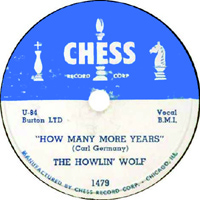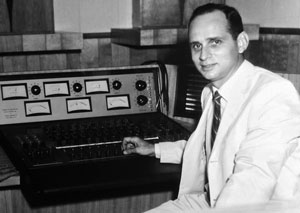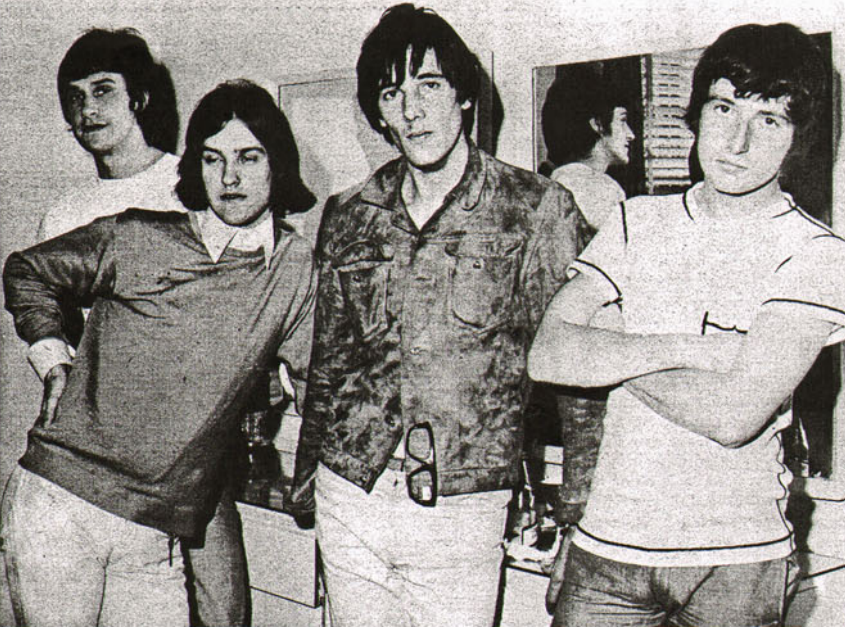Distortion and overdrive are the most common guitar effects used by guitarists.
From the 1950’s to today, the evolution of overdrive and distortion has been a huge milestone in electric guitar history. The discovery of overdrive and distortion for the electric guitar led to so many options for guitarists and made new genres of music possible to take off.
Overdrive
Overdrive effects pedals mimic the sound of an old tube amp with its volume cranked all the way up causing the speaker to break up and distort the sound. They produce a more subtle overdriven sound, saturated with less "bite" and clipping than distortion pedals. The clean tone can still be heard but the sound has slightly more grit to it than the normal clean tone especially when the strings are strummed harder. Overdrive effects are great for music genres with a less heavy or edgy sound like blues or country.
Before distortion pedals and multiple-channel guitar amps, guitarists played through their amps at lower volumes for the best clean tone. It was almost frowned upon to play through a tube amp at higher volumes. Guitarists experimenting with new sounds started to turn their amps all the way up and even cut or poke holes in the amp’s speaker to get an overdriven guitar sound not commonly heard in recordings at the time.
--> In 1951, the guitar player for Howlin’ Wolf’s band, Willie Johnson, turned his tube amp way up for the recording of “How Many More Years”. The tone of the overdriven amp was rare for its time and slowly became a desired sound for other guitarists. This song is now referred to and credited by many as one of the first rock and roll songs recorded.
In 1951, the guitar player for Howlin’ Wolf’s band, Willie Johnson, turned his tube amp way up for the recording of “How Many More Years”. The tone of the overdriven amp was rare for its time and slowly became a desired sound for other guitarists. This song is now referred to and credited by many as one of the first rock and roll songs recorded.
The Godfather of Fuzz
 In a Nashville recording studio during the early 1960’s, Glenn Snoddy was an engineer at the studio when a happy accident happened on one of the tracks of a Marty Robbins recording. About a minute and a half into the song “Don’t Worry”, you can hear this happy accident happen out of nowhere. On the recording, Grady Martin’s bass guitar was plugged into a mixer channel with a blown transformer and caused the signal to sound fuzzy. The track was kept on the record and sparked a new sound other guitarists wanted for their own.
In a Nashville recording studio during the early 1960’s, Glenn Snoddy was an engineer at the studio when a happy accident happened on one of the tracks of a Marty Robbins recording. About a minute and a half into the song “Don’t Worry”, you can hear this happy accident happen out of nowhere. On the recording, Grady Martin’s bass guitar was plugged into a mixer channel with a blown transformer and caused the signal to sound fuzzy. The track was kept on the record and sparked a new sound other guitarists wanted for their own.
Glenn Snoddy took this accident and traced back to where the problem occurred in the faulty mixer, and began to develop a stomp box that could be used to create the fuzzy guitar sound. Snoddy presented the design to a friend at Gibson, and the result was the introduction of the Maestro Fuzz-Tone in 1962. The Fuzz-Tone started off being marketed towards electric bass players, and then towards guitarists with the idea that it would allow their guitar to sound like different instruments. Gibson sold very few units of the Maestro Fuzz-Tone to the public in the beginning years.
 In 1964, the Kinks released a song called “You Really Got Me”. Ray and Dave Davies of the Kinks probably still argue about the speaker of the guitar amp responsible for the guitar tone on this track, but Dave insists he sliced the speaker in his guitar amp with a razor blade which created the guitar tone heard on the record.
In 1964, the Kinks released a song called “You Really Got Me”. Ray and Dave Davies of the Kinks probably still argue about the speaker of the guitar amp responsible for the guitar tone on this track, but Dave insists he sliced the speaker in his guitar amp with a razor blade which created the guitar tone heard on the record.
 A year later in 1965, Keith Richards of the Rolling Stones picked up a Maestro Fuzz-Tone to track what he originally heard in his head as a horn section with his guitar on “Satisfaction(I Can’t Get No)”. The sound of Richard’s guitar was so different that he didn’t like it at first when hearing it on the radio. Despite that original feeling towards the new sound of his guitar, he learned to love it and so did so many other guitarists, then and now.
A year later in 1965, Keith Richards of the Rolling Stones picked up a Maestro Fuzz-Tone to track what he originally heard in his head as a horn section with his guitar on “Satisfaction(I Can’t Get No)”. The sound of Richard’s guitar was so different that he didn’t like it at first when hearing it on the radio. Despite that original feeling towards the new sound of his guitar, he learned to love it and so did so many other guitarists, then and now.
Fuzz and Distortion
Music genres with loud, crunchy guitar tones like rock and metal, distortion is a key element. Distortion effects use higher gain and produce heavier, crunchier tones from either a guitar amp or through a distortion pedal. Guitar amps and distortion pedals boost guitar's electric signal, causing the sound to "clip", and create the distortion sound.
After the introduction of the first fuzz guitar pedals, companies started to expand on the circuits and abilities of the fuzz sound. The early fuzz pedals used transistors to overload the signal to create the fuzz effect. The 1970’s brought along using the operational amplifier in distortion pedals and changed the game completely. The op-amp allowed the sound to be clipped much harder than the fuzz pedals available, opening a door to new guitar tones and options.
The demand for overdriven and fuzz guitar tones changed how guitar amps were made also. Guitar amps with at least 2 channels allow you to use a clean tone or switch to overdrive or distortion tones. Other amps with one channel sometimes have a boost option to boost and dirty up the clean tone, but will often need a distortion pedal beyond that.
There is a huge assortment of distortion pedals available today for electric guitar. Most of these distortion pedals are based on several classic pedals with a classic sound, recreated and slightly modified.